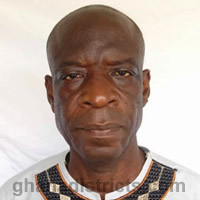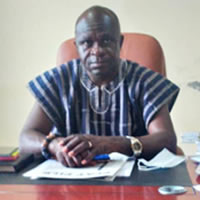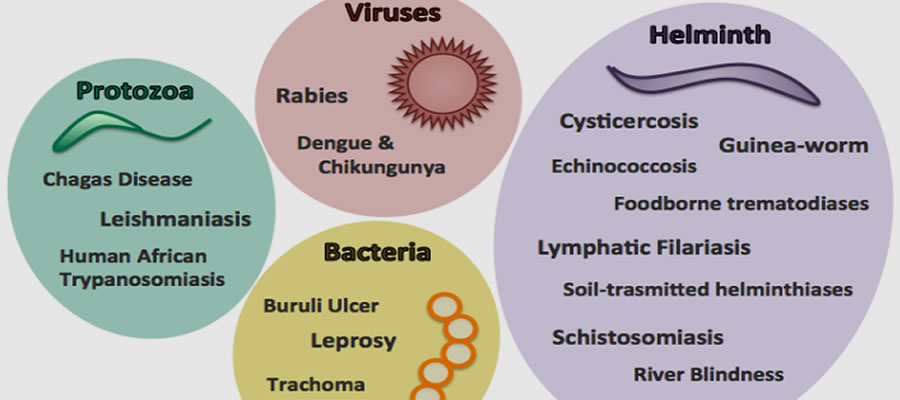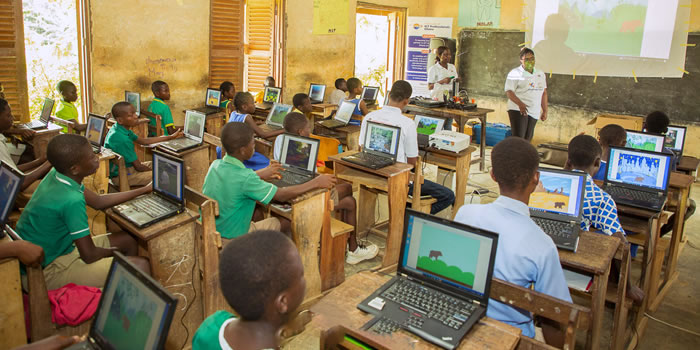

Population
The Akyemansa District recorded a total population of 97,374 during the 2010 population and housing census. The population of the district constitutes 3.7 percent of the total population of the Eastern Region. With an annual growth of 2.52% during the 2010 PHC. The district total projected population for 2017 is 116,158, with projected females (50.7%) and males (49.3%). The District is predominantly rural (65.1%) while urban localities constitute (34.9%). This implies that out of every 10 people in Akyemansa, close to seven people reside in rural areas whilst three reside in the urban areas.
The projected population for 2017, computed from the 2010 PHC, further indicates that about 52.0 percent of female reside in the urban areas compare to 48.0 of male with equal proportions (52%) of both sexes are in the rural localities. With an assumption of same sex ratio from 2010 PHC, the sex ratio for the district is 97.2 males per 100 females.
The urban localities have a sex ratio of 92.2 males per 100 females while the rural localities have a sex ratio of 100, which means that for every one male, there is equally one female. The district has five main settlements, which has attained urban status namely Ofoase, Ayirebi, Abenase , Bontodiasae and Adjobue .
Table 1.9: Population size by locality of residence by district, region and sex ratio
Source: 2017 Projections, Computed from GSS, 2010 Population and Housing Census
Population Distribution by Age and Sex
The 2017 projected proportion of the females in the district is reported to be a little higher than that of the males. The females form about 50.7 percent of the entire district population. This is in line with both regional and national figures where the females form higher proportion of the population. Figure 1 show the age and sex structure of the district’s population. The population between the ages of 0-14 years constitutes 42.1 percent of the district’s population. Those within the active labour force (15-64 years) also represent about 50.2 percent of the population while the population 65 years and above forms 5.7 percent of the entire population. The breakdown of the 2017 projected population from the 2010 PHC is presented in table 2.2 below:
Figure 1.4 Age and Sex Distribution (Population pyramid)
Table 2.2
Source; 2017 Projections, Computed from GSS 2010 Population and Housing Census
Population Density
With a total area of 667.17 sq. km, the District's population density in 1984 was 77 persons per sq. km. Based on the 2000 population figure of 71,534; the population density in 2000 was 107 persons per sq. km. Based on 2017 population projections of 116,158 the district’s population density is 174 people per square kilometre. The district is thus sparsely populated. Compared to the whole region, the district has a low population density than the average for the region reflecting the dominance of relatively small size settlements in the district. This crude population density figure indicates that the farmers in the district could have access to large tract of land to undertake their farming activities.
The population density has been increasing over the years which imply that with time, the land available for agricultural activities per head will reduce. This will reduce the size of farms and farmers may not be able to expand their farming activities. Also with the introduction of small scale mining activities in the district by “galamsey” operators, land degradation in the district is on an increasing trajectory. However, land for agriculture is still substantial and there are no threats in the short to medium term. The District Administration in partnership with the Agricultural Directorate in the district should device new methods where by farmers can increase production and receive higher crop yield on their available farming plots without necessarily increasing their farm sizes.
Migration (Emigration and Immigration)
Migration is very important in the development process of every district. This indicates whether there will be available labour to take up jobs to be able to sustain the economy of the district or not. With the Akyemansa District being an agrarian one, the outflow and inflow of the people should be captured. The data collected indicated that about 2% of the entire district population surveyed normally leaves the district every year while those who come in constitute about 4%. This in migration figure is high as a result of the boom in illegal gold mining activities in the district. The migrants are mainly energetic young men between the ages of 21-48 years. The males constitute about 76% of the migrants into the district. Intra district movements are also significant. During the rainy season some of the inhabitants leave their places of abode and go to their villages in the district to carry out their farming activities.
Majority of these migrants have low educational levels. About 74 percent of them had at least completed basic education, 18 percent had completed secondary, vocational and technical schools, and 5 percent have attained tertiary education while the rest have never attended any formal school. These figures are presented in table 1.7
Table 1.11: Level of Education of Migrants
Source: AK3DA DPCU, 2013
There are also many settler communities in the district. The population of some of the towns in the district is dominated by settler farmers. These towns include Otwereso Camp, Yaw Nkran, Aboagyekrom, Mukyea, Otabil, Asabidie, Zevor, Gyaha. These settler farmers have been attracted into the district due to the fertile nature of the soil in the district for agriculture.
1.6.9.3 Gender equality
About 51.6 percent of the population in the District are female with 48.4 males; however, in the District Assembly females comprise of only about 10 percent with 90 percent of the decision makers being males leading to gender biasedness in district’s development direction. In the education sector, the differences in the enrolment level of boys and girls in the schools using the Gender Parity Index, from the Kindergarten to the Senior High School is as follows: Kindergarten -1.01, Primary - 0.99 Junior High School - 0.95 Senior High School - 0.91 respectively. This indicates that, more of the girls are not able to enter into the Senior High Schools due to some factors such as drop out as a result of teenage pregnancy, poor performance as result of the burden of household work during the Basic Examination, gender insensitive infrastructure at the basic school levels etc. There is the need to encourage girls to improve upon their learning skills in order to increase the number of girls enrolment in the Senior High Schools in the District.
In spite of the pivotal role women play within the family, community and the District at large, very few occupy key decision-making positions in any of the sectors of economic, political and social life. They are relegated to the background as far as public decision-making is concerned. Out of 38 Assembly members, only three (3) are females. This is because no concrete policy measures are in place to ensure that the structured inequalities between women and men are taken into account in promoting participation in policy decisions.
However; to reduce these inequalities, prevalence and practice of outmoded customs inimical to women’s rights, provide support for victims of violence and to enhance access to economic resources the district intends to put the following measures in place;
- Provision of regular budgetary allocations for building the capacity of Assembly women
- Ensuring equal access to resources, opportunities and funds for development.
- Ensuring that Ministry of Gender, Children and Social Protection (MGCSP) and NCCE increase their efforts to sensitize the general public in order to understand and support gender equality policies
- Ensuring that 40% of government appointments to District Assemblies are women
- Strict enforcement of existing legislation and sanctions against perpetrators of any cultural or religious practices that negatively affect the welfare, health, dignity and rights of women in the District.
- Provision of protection and support for abused women and children
- Institute informal entrepreneurial skill training for women groups
Most of the female in the farming communities of the District are the backbone of their household; however most of the interventions designed are not gender mainstreamed. With the Medium Term Development Plan 2018-2021, programmes will be gender mainstreamed to empower more women to participate in the local governance structure and help bridge the gap to some level between the males and females to help in the implementation of projects and programmes and also make input into decision making process in the District.
Settlement systems
The Akyemansa District exhibits a typical forest settlement topology. The settlement type is predominantly rural with nucleated pattern. There are few dispersed settlements but these are basically farm houses. Houses are generally of the compound type except the developing ones which have western type of houses with modern facilities. The rural settlements have local architecture and wall and roofing are generally made of swish/wattle and daub and thatch respectively. The major land uses are agriculture (food cash crops) settlements, infrastructure networks, utility installations, forest and midlands and open markets. The urban centres have land uses like commerce, industry, recreation and public amenities. The rural settlements have a few public structures which are basically schools and Cocoa sheds.
SPATIAL ANALYSIS
Spatial Organization
This unit of the analysis of data deals with the organization of natural, human and economic activities in space in the Akyemansa District. It deals primarily with the type, number and distribution of facilities and services within the district. It also aims at assessing the adequacy of these facilities and services, variety of functions performed by the various settlements and their functional hierarchies.
Location and Distribution of Services
Basic facilities such as Primary Schools are present in almost all the settlements that have more than 500 populations to support them. However, due to the extreme urban-rural dichotomy - a very unique feature of the district - every basic education like Nursery and Kindergarten cannot be found in some rural settlements because of their population size. Almost all the settlements have a form of water supply system; the predominant amongst the systems is the borehole. Through the help of some NGOs like the Water Aid, World Vision International, a lot of communities in the district have boreholes. About 76.7% of settlements have access to boreholes. The other water supply systems are pipe borne, streams and rivers, dugouts and wells, mainly such by individuals. Because of the perennial water shortage, most households use a combination of water supply systems.
Health services are woefully inadequate in the district as emphasized earlier on. In a district that does not have a hospital; health service is rendered by 6 health centres, 20 CHPS clinics and 1 maternity home. To add to the health woes of the district, some of the services are not fully operational for lack of personnel. Inadequacy in the distribution of services is also registered in banking services, security, postal and telecommunication services.
Scalogram Analysis
In order to identify or depict the presence or absence of a service, facility or functions in the various settlements within the district, a scalogram analysis was done. This technique is to help determine which settlements lack which kind of facilities and also help in guiding development decision making relating to the choice of location. The distribution and availability of services is shown on table 1.12 (Scalogram). From the analysis it was observed that most (about 70%) of the settlements were under-serviced and had to depend on nearby settlements for these services. Table 1.12 depicts the current situation in the district. The first order settlements in the district are, Ofoase and, Ayirebi, have 80 percent of the services considered while AkokoasoandAbenase has 60 percent of the services considered. The second order settlements are, Otwereso and Chia. These settlements have 45-60 percent of all the services considered. The hierarchy of settlement in terms of population and services is presented in the table below.
Table 1.12: scalogram
AKYEMANSA ISTRICT MEDIUM TERM DEVELOPMENT PLANT | (MTDP 2018-2021)
Accessibility to Services
Services are provided within a geographical area to a given population threshold. In order to determine the ease with which people from different locations within an area can enjoy certain services in other parts of the area; accessibility analysis is normally carried out. Five services that provide basic services to the people were selected for the accessibility analysis. They are: Periodic Markets, Health Services, Postal Services, Agricultural Extension Services and Banks.
Several standards and assumptions were used to determine accessibility to these functions on maps. They include threshold time for a service, travel speed on the various categories of roads and waiting time on each route and walking speed. These are shown in Tables 1.33 and 1.14.
Table 1.13: Classes of Road
Source: Simple Survey, 2017.
Table 1.14: Surface Accessibility to selected services
Source: DPCU, 2016.
Based on the above assumptions, isochrones were used to link areas of the same travel time. Two accessibility zones emerged- high and low. The areas covered by each accessibility zone were used to determine the number of settlements and people with potential physical access to services. Maps showing the access to the various services are shown on figures 1.5-1.7. The various accessibility zones were then super imposed on each other to produce an aggregate accessibility map – Figure 1.5The functional region for the district is also presented in figure 1.7
Figure 1.5 Accessibility to Health Services Facilities
Figure 1.6 Accessibility to Senior High Schools
Figure 1.7 Accessibility to Periodic Markets
In the district, many of the services and facilities considered were all located along the major roads and found in communities such as Ofoase, Akokoaso, Ayirebi and Abenase . Accessibility to Postal Services in the district is very poor. Less than one fifth of the district has access to postal services in the district. The coverage of Agricultural Extension Services was however very high in the district as about 60 percent of the entire district’s area is covered. This nevertheless means that access to and the delivery of Agricultural Extension services is the best. Some farmers do not have access to extension services stemming from the fact that number of officers falls far below the farming population in the district.
Access to banking services is fairly good and keeps on improving. New financial institutions such as Micro Savings and Loans Agencies have identified the district as a good investment destination. These banks are spread over the district. The banks are mostly rural banks. Accessibility to health services is also high. But due to inadequate personnel and equipment, lower order health services are rendered.
The district’s functional area is mainly along the major roads from the Birim North district to Ofoase as well as from Birim Central to Ayirebi. To improve upon accessibility to all services, there should be urgent need to improve the road conditions in the district.
Date Created : 2/5/2025 3:05:38 AM








 facebook
facebook
 twitter
twitter
 Youtube
Youtube
 +233 593 831 280
+233 593 831 280 0800 430 430
0800 430 430 GPS: GE-231-4383
GPS: GE-231-4383 info@ghanadistricts.com
info@ghanadistricts.com Box GP1044, Accra, Ghana
Box GP1044, Accra, Ghana